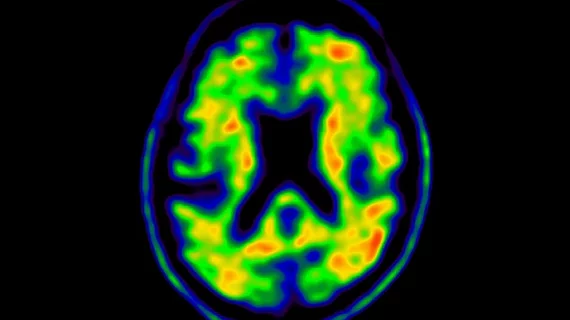Tau PET tracer found effective in 1st in-human study of its kind
A team of Johns Hopkins University researchers, conducting the first in-human PET study of three novel tau radiopharmaceuticals in Alzheimer’s disease patients, found [18F]RO-948 was the most capable for characterizing tau pathology in the disease.
“[18F]RO-948 is a promising radiotracer imaging tau pathology in Alzheimer’s disease,” authors wrote in the study published online May 4 in the Journal of Nuclear Medicine. “It shows good brain uptake, has no apparent brain penetrant radiolabeled metabolites, has a good kinetic profile, [and] shows little or no retention in cognitively normal young or elderly control subjects.”
The study participants were broken down into three groups: young health subjects, older healthy subjects and Alzheimer’s dementia subjects.
The first part of the study evaluated the chemical reaction of each tracer in the Alzheimer’s subjects and the young group of participants. [18F]RO-948 was selected for further evaluation because of its superior in vivo imaging characteristics, wrote corresponding author Dean F. Wong, MD, PhD, with Johns Hopkins University, and colleagues.
After brain PET imaging was performed, along with further testing, results found [18F]RO-948 displayed a higher contrast between predicted tau-rich and tau-poor regions. The imaging agent also outperformed all others in distinguishing between Alzheimer’s dementia and young healthy patients.
“The ability to image tau pathology in vivo is important for both differential diagnosis and in monitoring treatment response as new therapies include anti-tau mechanisms,” authors wrote.
Additionally, the healthy subjects retained minimal amounts of [18F]RO-948, while Alzheimer’s dementia participants demonstrated regional distributions which aligned with previous data on PHF-tau.
“It is our hope that tools such as [18F]RO-948 will allow us to gain a better understanding of the pathophysiology of Alzheimer’s disease, and in the context of drug development select patients for clinical trials, confirm the mechanism of action of drugs targeting pathological tau, and monitor the effects of disease modifying therapies regardless of whether or not they target tau directly,” Wong et al. wrote.

